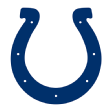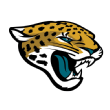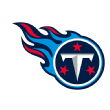If you had to list the reasons why the Eagles went from last place in the NFC East to Super Bowl LII champions in 12 months, weapons wouldn't be far from the top.
General manager Howie Roseman went out last year and transformed what Carson Wentz was working with by adding LeGarrette Blount, Alshon Jeffery and Torrey Smith in free agency. Corey Clement worked his way into the rotation as a replacement for the injured Darren Sproles. Nelson Agholor took Jordan Matthews' spot and evolved from failed first-round pick into an effective slot receiver. Throw in the Dolphins scapegoating Jay Ajayi for their problems and Philly's trio of effective tight ends, and you have a group of weapons that was able to help propel Wentz to an MVP-caliber campaign and keep Nick Foles afloat in the postseason.
In light of the successes that the Eagles and Rams had in revitalizing their offenses around their 2016 first-round picks last offseason, the league followed. The Bears signed what will seemingly be an entirely new receiving corps for Mitchell Trubisky. The Ravens turned over their wideouts for Joe Flacco and Lamar Jackson. Cleveland brought in plenty of talent for Tyrod Taylor and first overall pick Baker Mayfield. Fifteen of the first 51 picks in this year's NFL draft were skill-position players.
Now that just about every running back, wide receiver and tight end short of Dez Bryant are on a roster, let's take stock of where the league stands after a busy offseason. We're ranking each team's arsenal of running and receiving weapons from 32 to 1. Please keep a few things in mind:
These rankings are attempting to consider a team's skill-position talent without including the impact of the quarterback, offensive line or scheme. Let me repeat that again. These rankings are attempting to consider a team's skill-position talent without including the impact of the quarterback, offensive line or scheme. It's not possible to totally extricate one from the other, but this will be an educated guess.
These rankings don't include contract value. I might mention a contract here or there, but this analysis is strictly about on-field performance.
I'm solely considering how these players will perform in 2018. Long-term value beyond this upcoming season doesn't matter. It's impossible to project injuries, so I'm using each player's recent injury history as an estimate of his availability for this year.
The arsenals are weighted more toward receivers. All you have to do is take a look at contracts to see how the league values wideouts versus tight ends and running backs. The largest active annual salary on an extension for a running back is LeSean McCoy, at $8 million per year. That's what Trey Burton and Kenny Stills average on the deals they've signed over the past two offseasons.
Top-level talent wins out over depth. These rankings are weighted heavily toward each team's top five weapons, given that each squad will line up five skill-position players on most snaps. Organizations with truly remarkable depth at the skill-position spots will get a slight bump, but no team has an Antonio Brown lurking on its bench.
Finally, I didn't mention everyone. Every team has a rookie midround pick or a veteran with some history of success lurking as their sixth or seventh option. Most of them will have only a modest impact. Mentioning all of them would turn this into an even longer piece.
All right! The Jets were 32nd last season. Surely, they've invested in their skill-position talent for new quarterback Sam Darnold and won't be last this year, right?

32. New York Jets
Well, no. Former undrafted free-agent wide receiver Robby Anderson leads the way, but the secondary targets are low-ceiling veterans such as Jermaine Kearse and Terrelle Pryor. General manager Mike Maccagnan let Austin Seferian-Jenkins leave, but the duo of former Raiders backup Clive Walford and fourth-round pick Chris Herndon form the majority of one of the league's worst tight end depth charts. The move to spend $4 million per year on anonymous Browns back Isaiah Crowell doesn't move the needle. The Jets will be investing in skill-position talent next offseason.

31. Miami Dolphins
No team falls further in this year's rankings, as everything that looked promising for Miami in 2017 either didn't work out or didn't come back in 2018. Running back Jay Ajayi is gone and replaced by 35-year-old Frank Gore, who has nearly 15,000 carries on his back. Jarvis Landry has been swapped out for Danny Amendola and Albert Wilson, who have combined for two 100-yard games over the past two seasons. Tight end Julius Thomas whispered through a 388-yard, three-touchdown season, and he has been replaced in the lineup by second-rounder Mike Gesicki, a combination of round and position that has yet to produce even a 700-yard rookie season once. Kenny Stills was less efficient in a larger role, while DeVante Parker spent his presumed breakout season struggling with an ankle injury. The most exciting player left might be halfback Kenyan Drake, who could be squeezed by Gore and rookie fourth-rounder Kalen Ballage.

30. Dallas Cowboys
When you remove that dominant offensive line and quarterback Dak Prescott from the equation, the Cowboys are left with one excellent running back in Ezekiel Elliott and what must surely be the worst receiving corps in football. The four tight ends vying to replace Jason Witten have 94 combined career receiving yards, all of which come from Geoff Swaim. The team's best wideout is Allen Hurns, who had one impressive season in four years with the Jaguars and hasn't been able to stay healthy over the past two seasons. The team is excited about third-round pick Michael Gallup, which is a reflection on the power of hope, but even Tavon Austin has to believe that the organizational plan to give the former Rams wideout 12 to 24 touches per game on offense is too much Tavon Austin.

29. Buffalo Bills
Knees are the concern with the Bills' weapons. Tight end Charles Clay has spent the majority of his Bills career battling through knee issues. Top wideout Kelvin Benjamin was traded to the Bills in part because the Panthers were concerned about the long-term health of his knees. Second-year receiver Zay Jones, who was the worst starting wideout in the NFL last season by most metrics, underwent knee surgery in May. Shady McCoy saw his yards per carry drop by more than a full yard last season, although that was likely due more to an ill-fitting scheme than any significant drop in McCoy's own level of play. After the soon-to-be-30-year-old halfback, though, the Bills will be relying on players with a track record of injuries to catch passes from first-round pick Josh Allen (or AJ McCarron or Nathan Peterman). This is another team likely to be shopping for receivers next offseason.

28. Seattle Seahawks
Doug Baldwin famously argued that the Seahawks' weapons weren't "pedestrian" during their Super Bowl run, but he's the only skill-position player left from that team, and subsequent draft picks such as Tyler Lockett and C.J. Prosise haven't been able to stay healthy. The Seahawks swapped out tight end Jimmy Graham for Ed Dickson this offseason and added 34-year-old wideout Brandon Marshall, who was struggling even before suffering a season-ending injury with the Giants. Seattle fans will pin their hopes on first-round pick Rashaad Penny, but if the offensive line play doesn't improve under new OL coach Mike Solari, it might be impossible to evaluate the Seahawks' new starting running back.

27. Indianapolis Colts
The absence of Andrew Luck brought T.Y. Hilton back to earth, as the 2016 receiving-yardage champion saw his streak of 1,000-yard seasons snapped at four. Hilton should return to form if Luck is back under center in 2018, while the Stanford product should make the most of one of the league's most athletic one-two punches at tight end with Eric Ebron joining Jack Doyle. Indy also bought low on Ryan Grant after he mysteriously failed his physical with the Ravens, but the former Washington wide receiver is going to turn 28 during the season and hasn't yet posted a single 100-yard game as a wideout. If Nyheim Hines or Marlon Mack emerge as a promising running back, the Colts could rise up the rankings next season.

26. San Francisco 49ers
The 49ers have their star quarterback and an offensive guru as coach, but they're more about depth than impact contributors at the skill positions. The curious decision to pay Jerick McKinnon more than $10 million in 2018 to join Kyle Juszczyk in the backfield gives the Niners two versatile players, but neither has been particularly effective as a runner nor receiver during the majority of their respective careers. Marquise Goodwin had his best pro season by a wide margin last season, and he will be joined by the returning Pierre Garcon and second-round pick Dante Pettis, but the most likely place for growth is with second-year target George Kittle at tight end.

25. Jacksonville Jaguars
Leonard Fournette absorbed a huge workload when healthy in 2017, with the first-round pick's numbers impacted by an ankle injury. The LSU product averaged 4.6 yards per carry before the injury in the middle of the season and just 3.2 yards per rush afterward. Fournette should be better, but the additions to the receiving corps raise question marks. Donte Moncrief never broke out in Indianapolis and will be paid $9.6 million for his one year in Jacksonville, which could cost talented young wideouts such as Keelan Cole and Dede Westbrook reps they earned last season. New tight end Austin Seferian-Jenkins, meanwhile, averaged a scarcely believable 7.1 yards per reception last season, the lowest mark for any receiver with 50 catches or more in league history. Even if the Jags want to focus on running the football, they should give Blake Bortles something more at tight end than a catch-and-fall guy.

24. Baltimore Ravens
The Ravens came into the offseason with a mission to overhaul their receiving corps, and indeed, Joe Flacco's top five targets might be players who weren't wearing black and purple last season. Will they be better? Probably. Will they be good? Hard to say. Michael Crabtree is a solid possession receiver with the size to make plays in the red zone, but he also has dropped 19 passes over the past three years, which is third most among wideouts. John Brown hasn't looked the same since a breakout 2015 season while fighting the effects of sickle cell anemia, and Willie Snead could barely get on the field for the Saints last season, first because of a suspension and then various injuries. The new tight end duo of Hayden Hurst and Mark Andrews should help Lamar Jackson in 2019 and beyond, but rookie tight ends are always more likely to disappoint than impress. Alex Collins impressed during his debut season in Baltimore, but no one on a transitioning Ravens offense seems guaranteed to hold down his starting role into 2019.

23. Green Bay Packers
It's tempting to see the swap of Jordy Nelson for Jimmy Graham as a positive for the Packers, given Nelson's dramatic decline, but I'm not sure Graham is improving these days, either. He dropped off to 32.5 receiving yards per game last season, his lowest mark as a starter by more than 20 yards. Graham ran fewer routes, but he caught a pass on just 12.3 percent of his routes, which was his lowest rate as a pro. He made up for it by scoring 10 touchdowns on 57 receptions, but that 17.5 percent touchdown rate is a career outlier for the former Miami basketball player, and something Graham is unlikely to keep up, even with Aaron Rodgers under center.
If Graham doesn't at least challenge to be one of the most productive tight ends in football, the Packers aren't going to bless Rodgers with options. Davante Adams, now likely to be Rodgers' top target, still hasn't had a 1,000-yard season as a pro. (He will in 2018.) Randall Cobb, once a versatile threat at multiple spots in the lineup, has seen his yards per catch and receiving yards per game drop in each of four consecutive seasons. The Packers haven't had a single running back make it to 800 rushing yards once over the past three years, a feat only the Lions have matched. Rodgers will help this group play up, but we saw how little it was able to do with the star quarterback missing most of last season.

22. Denver Broncos
With the Broncos investing $25 million guaranteed in new quarterback Case Keenum and trading for new right tackle Jared Veldheer, general manager John Elway was forced to pinch pennies elsewhere on offense. It was no surprise that the Broncos moved on from C.J. Anderson, although the move turns things over to a combination of ineffective veteran Devontae Booker and rookie Royce Freeman. Denver never really addressed tight end, so they'll hope that redshirt rookie Jake Butt can serve as a receiving threat from Day 1. The Broncos used a second-round pick on Cody Latimer in 2014 and a third-round pick last year on Carlos Henderson, but Latimer never broke out before leaving this offseason and Henderson might be on the roster bubble after missing his entire rookie season with a finger injury, leading to the selection of Courtland Sutton with the 40th overall pick. The Broncos will spend another year depending on Emmanuel Sanders and Demaryius Thomas, both of whom are now on the wrong side of 30.

21. Detroit Lions
In a similar vein, the Lions have a pair of effective veteran wideouts in free-agent acquisitions Marvin Jones and Golden Tate. Since taking over, though, general manager Bob Quinn has devoted two first-round picks and two significant contracts to offensive linemen. He was locked in to one big deal for Matthew Stafford and gave his franchise quarterback another one, so the Lions have needed to save money elsewhere on offense. Quinn passed on bringing back tight ends Eric Ebron and Darren Fells, and he will replace them with the uninspiring duo of Levine Toilolo and Luke Willson.
Former preseason sensation Ameer Abdullah has averaged just 3.8 yards per carry as a pro, and while LeGarrette Blount should take that spot in the rotation, the bruising former Patriots starter was one of the worst goal-line backs in football last season, and he hasn't had much success outside of New England. Theo Riddick's ineffectiveness as a rusher -- he has yet to break 4.0 yards per carry even once -- keeps him one step below the Duke Johnsons of the world. The Lions have an above-average offense, but that's built more upon Stafford and the offensive line than Stafford's individual weapons, Jones and Tate aside.

20. Arizona Cardinals
Amid the morass of quarterback injuries that was the 2017 season, one of the most disappointing absences had to be David Johnson, who was arguably the best running back in football in 2016 and then went down for the 2017 season after 17 touches with a fractured wrist. The star back should be 100 percent for 2018, but that wrist injury gets piled on his list of ailments that includes a sprained MCL, dislocated finger and a strained hamstring.
Even with a healthy Johnson, though, Arizona's receiving corps has virtually nobody in his prime. Larry Fitzgerald's late-career turn into Wes Welker has been remarkable, but there's precious little behind him. (If that comparison seems inaccurate, consider that Welker posted an average line of 112-1,243-6 during his six seasons in New England; Fitz is at 108-1,131-7 over his past three seasons.) Fellow veteran Jermaine Gresham tore an Achilles last year, and while Ricky Seals-Jones flashed potential, it was over 12 catches. One member of the Cardinals' young wideout trio -- J.J. Nelson, 2017 third-rounder Chad Williams and rookie second-rounder Christian Kirk -- has to develop into someone who can consistently threaten safeties.

19. Oakland Raiders
It's too easy to make the joke that this would be a top-five team in the 2015 weapon rankings, but who on this team looks better right now than he did a year ago? You can find 2017 scapegoats -- Todd Downing for the Raiders holdovers, Brett Hundley for Jordy Nelson, the early-season suspension for Doug Martin, Martavis Bryant for Martavis Bryant -- but it's way more plausible to believe that one of these guys will bounce back than it is to think that every one of these players is going to suddenly spark to life.
Naturally, the player who seems most likely to return to form is Amari Cooper, given his age and track record before a dismal 2017 campaign. The track record for Nelson is less promising, while we're now two seasons (and three years) removed from the last time Marshawn Lynch was a consistent top-tier running back. The Raiders are deeper than most teams, with a depth chart that has potentially useful players such as Bryant, Seth Roberts and Jalen Richard in reserve roles, but this is an offense that is going to thrive upon its line and whatever new coach Jon Gruden has cooked up after a decade of watching from afar.

18. Washington
The most appealing parts of the offense in Washington are the nontraditional weapons, all of whom struggled with injuries last season. Jamison Crowder, Jordan Reed and Chris Thompson were reduced to 203 touches, down from 250 in 2016. Each should benefit from playing with Alex Smith, as long as they stay healthy, which has been a particularly difficult task for Reed, who has spent most of that time either on the sidelines or playing through pain. It's tough to project him for anything close to a full season.
The primary pieces are less threatening, especially at wideout. Former first-round pick Josh Doctson caught just 46.1 percent of the passes thrown his way in 2017, the fifth-worst rate in the league among receivers with 50 targets or more. Even as a deep threat, he needs to be more efficient. Washington gave Paul Richardson a five-year, $40 million deal, but Richardson racked up just 1,302 receiving yards across 47 games with Seattle; having both Richardson and Doctson in the lineup wouldn't seem to jibe with Smith's skill set. Second-round pick Derrius Guice should be an upgrade on Rob Kelley and Samaje Perine, and Guice will be the player who might help push Washington's weapons past league average.

17. Carolina Panthers
Quietly, few teams have poured more resources into their weapons over the past several seasons than Carolina. The Panthers' wide receiving corps includes two second-round picks (Devin Funchess and Curtis Samuel) and rookie first-round pick D.J. Moore, before even considering that the team also devoted a first-round pick in 2014 to departed wideout Kelvin Benjamin. Halfback Christian McCaffrey went with the eighth overall pick last season, while tight end Greg Olsen is due nearly $27 million over the next three years as part of the contract extension he signed in April.
None of those draft picks has delivered a superstar as of yet, although there's obviously plenty of time to come. Benjamin is gone. Funchess had a three-game breakout in the middle of the season after Benjamin was traded, but he racked up 197 receiving yards over five games afterward. Samuel missed most of his rookie season with injuries. McCaffrey flashed and had a pair of 101-yard games as a receiver in losses to the Saints, but departed offensive coordinator Mike Shula never found a way to unlock the guy who terrified opposing defenses at Stanford. The 33-year-old Olsen, meanwhile was limited to 191 yards across seven games during the regular season as a result of a foot injury. There's still a ton of potential in this group.

16. Cincinnati Bengals
If the Bengals could ever get all of their weapons on the field at the same time and protect Andy Dalton, they would be absolutely terrifying. Imagine a receiving corps with A.J. Green, Tyler Eifert, Tyler Boyd and 2017 ninth overall pick John Ross as the primary targets, and the duo of Gio Bernard and Joe Mixon working out of the backfield. Injuries limited several of those weapons in 2017, with Eifert and Ross combining for just five touches all season. Green's impact was dulled by an offensive line that didn't give Dalton enough time to find his star wideout. Investments in the line should help this group play up in 2018, although Eifert and Ross will perennially be question marks, given the injury histories.

15. Tampa Bay Buccaneers
Tampa spent last offseason focusing on getting Jameis Winston weapons, but just like when you buy your child some new toys for Christmas and he or she looks at them for a second before going back to the old favorites, Winston was mostly concerned with getting the ball to Mike Evans and Cameron Brate in key moments. DeSean Jackson, who seemed like he would be open by 5 yards downfield once or twice per game for all of eternity, didn't make a single catch on 12 tries at passes thrown 30 or more yards in the air. He had 31 such catches over the previous five seasons, second in the league behind A.J. Green. O.J. Howard showed promise, but as is often the case with rookie tight ends, his impact was limited.
All the receiving pieces an NFL coach would want are here, but the Bucs will have to prove that their taste in running backs has improved after giving Doug Martin an extension, only to see him become the first NFL player since 1934 to carry the ball 100 times and average fewer than 3.0 yards per rush in consecutive seasons. Like Washington, the Bucs will depend on a second-round pick -- USC back Ronald Jones -- to move up the ranks here.

14. Tennessee Titans
Is Corey Davis going to blossom into a No. 1 receiver? Injuries and the curse that has seemingly afflicted rookie wideouts over the past several seasons limited Davis to 375 receiving yards in his debut campaign, but if the No. 5 overall pick in last year's draft takes a big leap forward, everything could fall into place for Tennessee. Rishard Matthews is likely stretched as a top wideout, but he would be an above-average No. 2.
Delanie Walker is beginning to decline as he hits his age-34 campaign, but if Davis can take some of the heat off Tennessee's star tight end on third downs -- where Walker has caught 72 passes over the past three years, more than any other tight end in the league -- Walker's aging won't slow down Marcus Mariota. The one-two punch of Derrick Henry and Dion Lewis does have the Ice Hockey-approved big back/small back combo down, but Lewis' perennial injury concerns cap his ceiling, while the track record of backs leaving New England is riddled with disappointments.

13. Cleveland Browns
Josh Gordon thinks the Browns already have the best receiving corps in football, and while I'm not sure I agree, it's related less to talent and more to availability. Gordon produced at a 1,072-yard pace last season after returning from his suspension. The Browns add star slot receiver Jarvis Landry to that bunch and return former first-round picks Corey Coleman and David Njoku. It's fair to say that counting on Gordon and Coleman to be around for all 16 games would be hopeful, at best; and Coleman hasn't played especially well around his various injuries, but the former Baylor star has spent the entirety of his pro career catching passes from Robert Griffin, Kevin Hogan, Cody Kessler and DeShone Kizer.
If those guys do stay on the field all season, the Browns are in business. They have a wildly underrated back in Duke Johnson, so much so that Cleveland appears set to take away his path to a bigger role by signing Carlos Hyde and drafting Nick Chubb. The signing of Hyde seems curious given Cleveland's subsequent moves to draft Chubb and hand Johnson an extension, but the Browns have plenty of depth at halfback in the short term. Few teams have more upside than Cleveland's set of weapons.

12. Houston Texans
In the fever dream that was DeShaun Watson's six starts for the Texans in 2017, his weapons unfurled into a terrifying hydra. The Texans ranked third in offensive win probability added per game from weeks 2 to 8 and 30th from then on, which is both a credit to what DeAndre Hopkins & Co. can do with the right quarterback and a reminder of how most of those weapons (Hopkins aside) were anonymous with the wrong passer and a dismal offensive line.
Naturally, any 2018 projection for the Texans' weapons would find them somewhere in the middle of those two extremes. Hopkins has a reasonable case -- given his quarterback play -- for being the best wide receiver in the league at the moment. After that, though, the Texans don't have a second star. Will Fuller has been wildly inconsistent, and he won't score seven touchdowns in four games again, as he did last season. Lamar Miller has lacked explosion since joining Houston in free agency and has just three plays of 30 yards or more in two years as a Texans back, down from seven during his final two years in Miami. Backup D'Onta Foreman might have taken over a larger share in 2018, but an Achilles injury might delay his ascent until 2019. And the brain injury-induced retirement of tight end C.J. Fiedorowicz leaves the position bare behind Ryan Griffin, who missed most of the season with a concussion of his own.

11. New Orleans Saints
Few teams could replace Brandin Cooks with Ted Ginn Jr. and not skip a beat, but the Saints managed to pull that off in 2017, thanks to an excellent season from their offensive line and the seemingly ageless excellence of Drew Brees. The cumulative numbers were down because the Saints held leads and slowed their pace -- they ran an even 1,000 offensive plays after making it to 1,105 in 2016 -- but the duo of Mark Ingram and Alvin Kamara became the first pair of running backs since the merger to each produce 1,500 yards from scrimmage on the same team in the same season.
They probably won't be as effective of a duo in 2018, given that Ingram is already suspended for the first quarter of the season. Kamara is unlikely to average 6.1 yards per carry again, although he could assume a bigger workload in his second season. The receiving corps behind Michael Thomas doesn't contain many locks to be effective, although Ginn's second act as an effective NFL wideout in his mid-30s now has been going on for three seasons. Cameron Meredith is likely to see more snaps than the departed Willie Snead and should be an upgrade at wideout, although the tight end depth chart offers more in blockers than it does in receivers. The Saints' offense still should be very good, but it would be fascinating to see how their weapons would look without a future Hall of Famer under center.

10. Los Angeles Chargers
You get the feeling that the Chargers have one of those dry-erase boards with "It's Been ___ Days Since Our Last ACL Injury" written at the top. This time around, it is tight end Hunter Henry, who was about to move into a primary role before suffering a season-ending knee injury in May. The Chargers could re-sign Antonio Gates, but the only tight end of note on their roster is blocker Virgil Green.
One solution would be to play to the enormous amounts of depth the Chargers have at wideout, where 2017 first-round pick Mike Williams might not be guaranteed a starting role ahead of Tyrell Williams or Travis Benjamin. The obvious star is Keenan Allen, who has averaged 87.2 receiving yards per game over the past three years, which is fourth in the league over that time frame. The problem is that the former Cal star also has missed 23 games over that stretch with various injuries, and he just completed his first full 16-game season after five years in the NFL. Melvin Gordon also finished his first full season in three years, and while he has been a productive fantasy back, he has yet to average 4.0 yards per carry once as a pro.

9. Chicago Bears
It's certainly fair to say that no team this offseason has added more weapons for its quarterback than the Bears. Many of general manager Ryan Pace's moves are gambles, both in terms of the contracts involved (which aren't being considered here) and the track records of the players in question (which are). Allen Robinson once made Blake Bortles look like a promising quarterback, but he's coming off of a torn ACL. The player most likely to immediately bounce back from a torn ACL would be a young athlete who suffered the injury early in the previous season, which is exactly the case with Robinson. He is a legitimate No. 1 receiver and likely to serve as one in 2018.
The other new faces have the potential to break out but haven't yet been consistent contributors. Taylor Gabriel was a replacement-level wideout who the Bears passed on as a free agent before a breakout half-season for the Falcons in 2016; the 27-year-old was anonymous for Atlanta last season. Trey Burton was Philadelphia's third tight end and scored an unsustainable five touchdowns on 23 catches last season; now, he'll be playing the Travis Kelce role for new coach Matt Nagy in Chicago. Players such as Kevin White and Adam Shaheen have athletic pedigrees, but if the Bears believed that either player was going to be a star contributor, they wouldn't have signed Robinson and Burton or drafted Anthony Miller in the second round. After Robinson, the Bears' strength at receiver is in their depth, as opposed to individual talents, at least until someone else breaks out.
What pushes the Bears up these rankings, instead, is their one-two punch at halfback. Jordan Howard and Tarik Cohen will combine to post a cap hit of about $1.4 million in 2018 and might very well project to be the best pair of running backs in football, if Ingram and Kamara slip. Cohen's versatility seems far more likely to be rewarded by Nagy than it was by departed offensive coordinator Dowell Loggains.

8. New England Patriots
The Patriots finished No. 1 in these rankings last year, thanks to a combination of top-level talent with unmatched depth. Those extra players came in handy when the Pats lost Julian Edelman before the year and Chris Hogan for half of the season. The Pats also have taken quite a hit this offseason, with Brandin Cooks and Danny Amendola leaving and being replaced on the roster by the combination of Jordan Matthews and Cordarrelle Patterson. Edelman, suspended for the first four games of the year, will return as a 32-year-old coming off of a torn ACL. (It is perhaps worth noting that Wes Welker, who preceded Edelman in the slot, was allowed to leave for Denver at 32 and was essentially done by 33.)
Coach Bill Belichick and offensive coordinator Josh McDaniels make up for an arguably lackluster group of wideouts with Rob Gronkowski and a dizzying array of running backs. The most dominant tight end in football history can make up for plenty of mistakes, but Gronk's injury history requires no introduction. Even at halfback, where the Patriots drafted Sony Michel in the first round, New England will be forced to replace the production of Dion Lewis. Tom Brady will still make it all work, of course, but the Pats have downgraded from an embarrassment of riches to mere riches.

7. Philadelphia Eagles
The team that beat Belichick's Patriots in Super Bowl LII is structured in a similar way, combining a star tight end with a rotation of useful running backs. Zach Ertz isn't as dominant as Gronkowski, but his injury history isn't as pressing. I'd also argue that the Eagles have a better group of wideouts for 2018, especially given that Edelman is guaranteed to miss at least four games. Philly can expect more out of Alshon Jeffery, who played through a torn rotator cuff last season. To the shock of everyone, Nelson Agholor emerged as a useful slot receiver, and he should continue to improve in that role, while Mike Wallace should be an upgrade on the departed Torrey Smith and could be pushed by further improvement from second-year wideout Mack Hollins.

6. Los Angeles Rams
I grossly underestimated the Rams' weapons last year. Running back Todd Gurley looked stuck in mud during his second season with Jeff Fisher, then subsequently led the league in fantasy points in 2017. Robert Woods, who had been a more notable blocker than pass-catcher in Buffalo, averaged just over 65 receiving yards per game. Cooper Kupp was the second-most productive rookie wideout in the league. Sammy Watkins had a middling year, and it didn't even really matter. The Rams were a joy to watch for most of last season, and they upgraded on Watkins by trading a first-round pick for Brandin Cooks, who has averaged 1,131 receiving yards and eight touchdowns over the past three seasons.
Excitingly for Rams fans, this is a young group of weapons. Jared Goff's top six targets will all be 26 or younger in 2018. (Somehow, Cooks is younger than Kupp.) If everyone produces at the same level from a year ago and they swap out Watkins for Cooks, this could be the best group in football. My one concern is that Gurley is more likely to be very good than transcendent. Here are the most recent backs who paced all rushers in fantasy scoring over the past 10 years and where each ranked among their brethren the following season:
David Johnson is obviously the outlier because of his injury, but recent history suggests that Gurley is more likely to be something like the seventh-best running back in football than repeat as the league's most productive halfback.

5. Minnesota Vikings
Even the Vikings didn't expect Adam Thielen to turn into one of the most productive wideouts in the NFL, given that they offered Alshon Jeffery a multiyear deal that would have consigned Thielen to a role in the slot. Jeffery is obviously happy with the choice he made in free agency, but the Vikings ended up with one of the biggest bargains in football. Thielen finished fifth in receiving yards, and the only wideout duo to top Thielen and Stefon Diggs in receiving yards was Antonio Brown and JuJu Smith-Schuster. It seems safe to give up on former first-round pick Laquon Treadwell, but new slot receiver Kendall Wright could be an upgrade on Jarius Wright.
At the other spots, the Vikings have high-ceiling options. Kyle Rudolph's target share went down with the departure of Sam Bradford and the emergence of Thielen, but he still managed to catch eight touchdown passes. He also has played all 16 games in each of the past three seasons after missing nearly a full year between 2013 and 2014. Running back Dalvin Cook is coming off a torn ACL, and he looked promising before going down, as the 2017 second-round pick was averaging 4.8 yards per carry and generating first downs on more than 20 percent of his rush attempts. Cook is coming off early fantasy draft boards as the 10th-highest back by ADP, which speaks to his potential. The 22-year-old was on pace for more than 1,400 rushing yards when he was hurt; if Cook stays at that level in 2018, the Vikings might have the league's best big three.

4. Pittsburgh Steelers
Of course, the Steelers annually have the inside track on the best wide receiver and running back in football with Antonio Brown and Le'Veon Bell on board. Bell's 2017 season was surprising, though. For a player who had either been unavailable or incredible during his first three years as Pittsburgh's primary back, Bell was neither last season. The 26-year-old stayed healthy and assumed a massive workload, leading the league with 321 carries, but he wasn't the same hyper-efficient back of old. In 2016, Bell turned 261 carries into 1,268 yards. With 61 additional carries last season, Bell gained just 23 more yards than he had the previous season.
The problem was that Bell didn't come up with the explosive plays we saw from him in years past. From 2013 to 2016, the Michigan State product racked up a 30-plus-yard gain once every 42 touches. With 406 touches last season, history suggests Bell would have had between nine and 10 of those explosive plays. Instead, Bell had only three of them, all in the passing game and none going for more than 42 yards. Even if the chances are that Bell won't be as healthy this season, he's likely to turn more of the touches he gets into highlight-reel runs and catches.
The Steelers have a big three to match up with just about anyone in Bell, Brown and JuJu Smith-Schuster, who just racked up the sixth-most receiving yards in league history for a wideout in his age-21 season. After that, though, Pittsburgh drops off. There doesn't appear to be much behind Bell at halfback, and the tight end duo of Jesse James and Vance McDonald aren't efficient. If second-round pick James Washington makes an immediate impact at receiver -- which might be tough if Bell and Brown stay healthy, given their typical workload -- this will look low.

3. Atlanta Falcons
If you saw the Falcons drafting another Alabama wide receiver in the first round, pat yourself on the back. Atlanta already seemed set at wide receiver for the short term with Julio Jones and Mohamed Sanu, but with Taylor Gabriel leaving, the Falcons added a silky-smooth route runner to replace him in Calvin Ridley. The recent track records of first-round picks at wideout isn't filled with success stories, but Ridley should be an upgrade on the 378 receiving yards Gabriel racked up a year ago.
Atlanta is another team in the discussion for the best running back duo in football with Tevin Coleman and Devonta Freeman, but Freeman was less efficient across the board last season while fumbling four times on 232 touches. The anticipated Austin Hooper breakout didn't really arrive, either, as the tight end turned a blown coverage into an 88-yard touchdown against the Bears in the opener but generated only 398 yards and two scores over the ensuing 15 games. We saw how devastating the Falcons can be when everything clicks, as was the case in 2016, but they're just one small step behind the top two attacks in football. It would help if they get to run more drives -- the Falcons had just 157 meaningful offensive possessions in 2017, lowest in the league and a whopping 38 possessions behind the league-leading Cardinals.

2. New York Giants
Nobody can say that Eli Manning lacks an arsenal. The Giants ranked low on this list last year out of pessimism against their running backs, fears about Brandon Marshall after a rough year with the Jets and the slim likelihood of rookie tight end Evan Engram having an immediate impact. The first two turned out to be legitimate, but Engram -- in part because he was the last man standing after injuries -- had a wildly productive debut season. The first-round pick finished with 722 receiving yards, which ranks fourth among rookie tight ends since the merger and is the most since Jeremy Shockey had 894 yards for the Giants in 2002. He was a top-five tight end by fantasy points in 2017, and he should be in the running again this season.
The expectations for Saquon Barkley, meanwhile, are Offensive Rookie of the Year. Outside of concerns about his offensive line, it shouldn't take much convincing to believe that Barkley will be a leading back from the outset, both as a runner and a receiver. Odell Beckham Jr. also should be healed from his fractured ankle and playing for a new contract, which could give the Giants a reasonable shot at having a top-five contributor at running back, wide receiver and tight end. The wideout depth chart is thin, and there's going to be an adjustment period for Sterling Shepard as the Giants get away from using 11 personnel on every snap and move the third-year wideout out of the slot, but the Giants are going to have moments this season in which they make defenders look absolutely stupid.

1. Kansas City Chiefs
This has been building one year at a time for the Chiefs, who were relying on players such as Charcandrick West and Jason Avant as meaningful weapons during their playoff run in 2015. It starts with Travis Kelce, who is the consensus second-best tight end in the league behind Gronkowski. In 2016, the Chiefs added Tyreek Hill, who graduated from his gadget return man role as a rookie into a real-deal wideout last season by posting a 75-1,183-7 line. Andy Reid & Co. drafted Kareem Hunt last season, and the running back produced 1,782 yards from scrimmage as a rookie, which was the 10th-best mark for a debuting runner in league history. The Chiefs likely will give him snaps off more frequently with the return of Spencer Ware, but Hunt already is one of the league's best backs.
It's hard to find a team that can say it's paying its fourth-best weapon $16 million per year, and, in part, that's because the Chiefs probably overpaid Sammy Watkins. If we ignore the money and the hype surrounding Watkins coming out of Clemson, it's accurate enough to say that Patrick Mahomes' fourth-best weapon is a 25-year-old guy who averaged just over 80 receiving yards per game in 2015 and turned nine red zone targets into seven touchdowns last season. The upside for Watkins is still as a legitimate No. 1 receiver in an offense that already has two of them.
While we can never truly know whether a young quarterback would develop into a star in any situation, it's hard to imagine what else Patrick Mahomes could ask for than Reid as a coach and this bevy of talent as targets. Every team is susceptible to injuries, and Mahomes will have growing pains, but no offense has as much upside across the board at the skill-position spots as these Chiefs.
